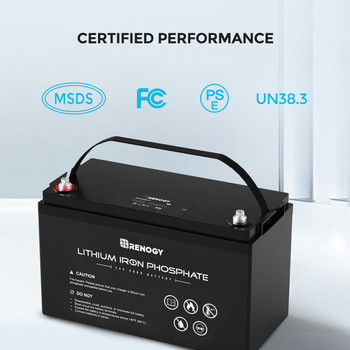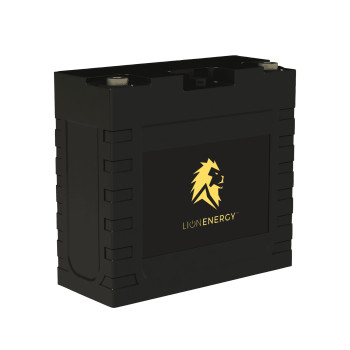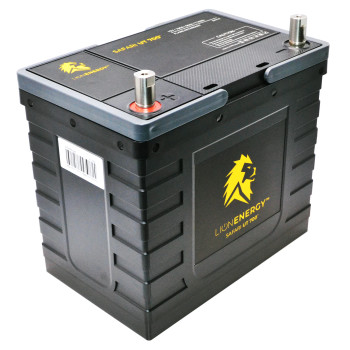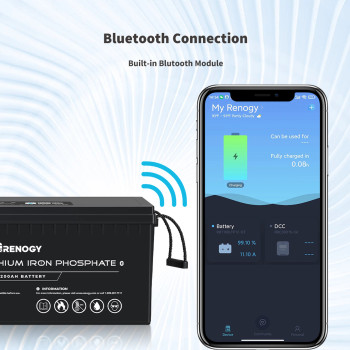Lithium Iron Phosphate Batteries
LiFePO4 (Lithium Iron Phosphate) batteries, on the other hand, are a newer and more expensive technology that offers several advantages over AGM batteries. They are much lighter, have a longer lifespan, and are more efficient at storing and releasing energy. LiFePO4 batteries also have a higher cycle life, meaning they can be discharged and recharged more times without losing capacity. They are more expensive than AGM batteries but can be a better long-term investment.
Other advantages of lithium include:
- You can run them all the way down to 0% charge with no (or minimal) ill effect as long as they are recharged in a timely fashion. While this is not recommended , it does not affect them in the same way it does traditional lead-acid batteries.
- You can let them sit unattended for long periods of time at partial SOC (State Of Charge) between 50-80%. They can sit like that for months with no ill effects, a lead-acid battery would probably be ruined or compromised under the same conditions (they generally need to be brought to full charge once a month).
- You can add new ones to old ones as long as they are in the same approved categories, usually same manufacturer, sometimes same size but not always. this is huge of course, allowing users to expand over time in a way you could never do with traditional lead-acid.
- You don't have to worry as much about cabling lengths between batteries for complicated reasons (a.k.a. the Peukert Effect).
- They generally have onboard computers these days (a.k.a. "internal BMS/Battery Management System") that take care of important things like not accepting charge below a certain temperature (there are also self-heating models now).
-
On Sale


Renogy
Now: $589.99Was: $685.9924V 50Ah Lithium Iron Phosphate Battery No more heavy lifting! A one-step power solution for your 24V system! The Renogy 24V 50Ah Lithium Iron Phosphate Battery is designed for the drop-in replacement of AGM and GEL batteries. It features...Now: $589.99Was: $685.99 -


Renogy
$603.9912V 100Ah Lithium Iron Phosphate Battery w/ Bluetooth Introducing Renogy 12V 100Ah Bluetooth Smart LiFePO4 Battery The experience goes further. The Renogy Smart Lithium Iron Phosphate Battery with Bluetooth is...$603.99 -


Lion Energy
$179.99Lion Energy Safari UT 250 - 12V 20Ah Lithium Iron Phosphate (LiFePO4) Battery The Safari UT™ 250 is the latest in Lithium Battery technology. It replaces traditional deep cycle lead acid batteries with the safest and longest lasting...$179.99 -


Lion Energy
$499.99Lion Energy Safari UT 700 - 12V 56Ah Lithium Iron Phosphate (LiFePO4) Battery The Safari UT™ 700 is the latest in Lithium Battery technology. It replaces traditional deep cycle lead acid batteries with the safest and longest lasting Lithium...$499.99 -


Renogy
$1,149.9912V 200Ah Lithium Iron Phosphate Battery w/ Bluetooth The Renogy Lithium Iron Phosphate Battery w/ Bluetooth is designed for the drop-in replacement of deep-cycle lead-acid batteries with its standard BCI group size. Weighing only half of the...$1,149.99
